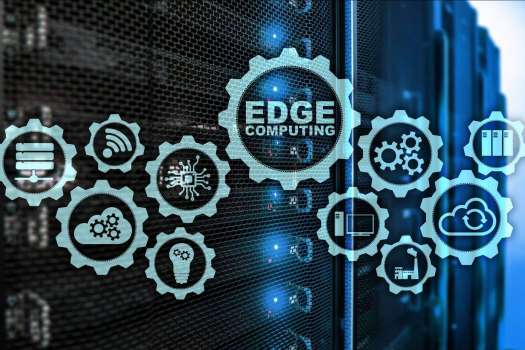The fourth part of the article"Successful edge computing"
Just as migrating from centralized data processing to edge computing allows more freedom and flexibility, it also points to simpler, more effective organizational structures for managing information that can also be consciously adopted by users.
“Edge computing and IIoT are inseparable, and devices have proliferated, but I’m not sure ‘edge’ is the right term because it’s really just a different place to do computing. Either way, there’s a lot of data being collected, and users initially felt they had to get it all into their data centers. However, the data quickly overwhelmed available bandwidth in many cases, and users learned they didn’t really need to centralize it at all,” says John Clemons, manufacturing IT director at system integrator Maverick Technologies, a Rockwell Automation company. “Consequently, they’ve started to keep more data where it originates, which is really why we’re doing edge computing. With it, a person standing five feet away from their IIoT devices in the field can process and analyze their data right there, instead of sending it all back to a big data center in the sky and processing it and analyzing it there. And, in the end, they’re only sending data to the data center that’s actually needed there.”
Clemons reports this strategy allows edge computing to go in many different and useful directions, such as processing data locally, providing data for real-time analytics and dashboards, and providing data to the various business systems as needed to perform their tasks. “We have one large food and beverage client that just started up a 24/7 greenfield facility with our IIoT solution and a lean, skilled workforce. They wanted to use edge computing to keep their manufacturing data on the shop floor, separate from their cloud-based SAP application that handles financial data,” says Clemons. “They have a combination of IIoT devices that collect plant-floor data, industrial PCs working as data servers, and tablet PCs and smart phones. So they established a line between manufacturing and financial information by keeping their manufacturing data in edge servers and local historians.
“For example, after running 50 batches, the only data that goes to SAP is the bare minimum needed for the financial calculations. The manufacturing details are all on edge servers, and viewed on dashboards for local analysis and reporting, so operators know what’s going on. The manufacturing data is also used for digital twins, for digital threads throughout the facility, and for batch and manufacturing execution system (MES) functions to optimize production.”
Clemons adds that keeping manufacturing and financial data separate at the new food and beverage facility lets each side perform its own tasks better and cooperate as needed. “They’ve developed a cool synergy,” he explains. “There’s still the cloud, SAP, and the corporate data warehouse, but there’s also edge and mobile computing, radio frequency identification (RFID) tags and barcodes, and batch and MES functions. All feed into the IIoT infrastructure, along with the sensor, device and equipment data from hundreds of pieces of equipment. This lets the operators and the engineers do what they do best. Where they used to be limited by the bandwidth of reaching the cloud, now they can do their jobs because the IIoT ties them into smart device and supply chain connections, and into all the analytics and MES functions they want. Data separation also opens up the capacity for them to develop digital twins of their devices and equipment to improve performance. They’re also developing digital threads, which collect information along the way as the products move through each production line, just as data goes from an operation to its digital twin.”
Cloud comes down
Once computing leaves the data center and reaches the edge, it can be scaled to meet individual needs. However, cloud computing is also flexible, and because the edge is where everything is happening, the cloud is moving there, too. Some users refer to ground-based cloud computing as the "fog." However, Maverick’s Clemons reports that mini-clouds or “cloudlets” can be set up in edge servers to provide cloud-style capabilities locally.
“These solutions look like corporate clouds, but they’re smaller and support mobile data processing, as well as augmented reality/virtual reality (AR/VR) applications,” says Clemons. “One advantage is that cloudlets can work the same as a corporate cloud, and Microsoft or other service providers can update them just as they do for a large cloud, such as performing regression tests for software patches.”
Building at the boundary
Because its simpler components and networking can be implemented at any stage where they'd be useful, Clemons reports migrating to edge computing can begin anywhere in a process application because its simpler components and networking can be implemented at any stage where it would be useful.
“It’s best to review your overall business strategy, what you’re trying to do, and how it translates into your manufacturing strategy. Manufacturing customers want more than just products; they want data and products as a service,” says Clemons. “Second, empower your teams because edge computing and smart manufacturing are as much about people as they are about devices. Third, you can streamline your processes or revamp brownfield areas because edge computing can start there, too. Fourth, determine what connective technologies your smart manufacturing and smart supply chain will need to work together, whether it’s components and servers, or RFID and automatic guided vehicles (AGV). Fifth, even though we’re all behind the curve, implement available cybersecurity for all edge computing functions and connected systems, such as setting up basic zones and conduits. Sending less data to the cloud reduces the attack surface, but cybersecurity is still crucial.”
About the author: Jim Montague, executive editor of Control

